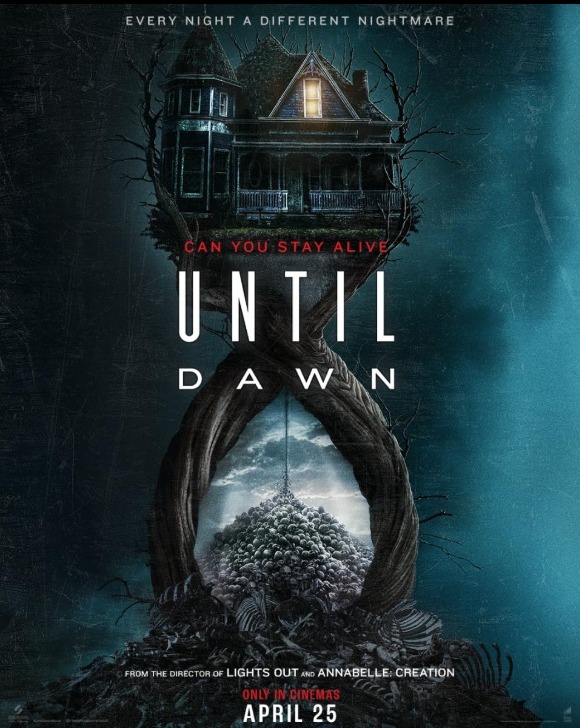Until Dawn Movie Review: A Dark Journey Through Sound and Storytelling
Until Dawn weaves a gripping narrative that touches upon the depths of friendship and survival, leaving an eccentric echo that makes it noteworthy in the horror genre. While horror films often bank on shock value and jump scares, this film’s exploration of psychological dread and, oddly enough, musicality provides a multi-layered experience that piqued my interest. However, does it fulfill on the promise of innovation, or does it merely tread familiar grounds?
A Fresh Take on the Horror Genre and Its Soundscape
At its core, Until Dawn tells the tale of a group of friends trapped in a malevolent time loop, but what sets it apart is the atmospheric use of sound and silence. Directed by David F. Sandberg, renowned for his previous work in the horror realm, this film takes a different note by leveraging minimalism in its sound design. The eeriness doesn’t just stem from visual horror; the score composed by Benjamin Wallfisch acts as a territory marker, guiding viewers through an auditory labyrinth while echoing the filmmakers’ intentions.
The film features performances from a notable cast that includes Ella Rubin, Michael Cimino, and Odessa A’zion, each bringing their characters to life in a vivid blend of tension and tragedy. It makes for an intriguing narrative when combined with its musical elements; the silence often feels almost musical itself, accentuating the emotional weight of key moments in the film.
Characters and Their Musical Interludes
The characters are, for the most part, archetypal: Clover, played by Ella Rubin, seeks to uncover the mystery of her missing sister Melanie, portrayed by Maia Mitchell. This quest leads Clover, alongside ex-boyfriend Max and friends, to the haunted hill of Glore Valley. The emotional layers of these relationships offer moments of harmony amidst the film’s dissonance.
Star Cast Overview:
| Actor | Role | Notable Performance Insights |
|---|---|---|
| Ella Rubin | Clover | Delivers a gripping performance with deep emotional resonance |
| Michael Cimino | Max | Engages the audience with relatable vulnerability |
| Odessa A’zion | Nina | Captures attention with a layered character |
| Ji-young Yoo | Megan | Provides comedic relief amidst the horror |
| Belmont Cameli | Abel | Supports with charismatic energy |
Narrative Flourish: Sound Design Meets Horror
Until Dawn sets a gripping atmosphere with its unique premise—friends battling to escape a time loop of despair and existential dread. The ominous visuals paired with Wallfisch’s minimalist musical score amplify the tension and elicit genuine emotional responses. However, the narrative falters in execution, offering sporadic moments of fear that clash with the film’s otherwise interesting premise.
The Horror Elements: Dread in Audio
The film’s horror strategy relies heavily on silencing and subduing audio to amplify moments of tension. For instance, scenes devoid of background music provoke genuine unease, positioning sound as a character within the plot itself. This levels up the scare factor, as suspense thrives in these quiet moments before the next jump.
Comparative Analysis of Sound Elements in Horror
| Movie | Type of Sound Design | Level of Suspense | Use of Silence |
|---|---|---|---|
| Until Dawn | Minimalist and eerie | High | Strategically placed |
| A Quiet Place | Silence-driven with sudden bursts | Very High | Constantly utilized |
| Midnight Horror | Chaotic and overwhelming | Medium | Rarely used |
Undesired Twists: Inconsistencies in Execution
Despite its intriguing setup, the film suffers from inconsistent writing. The characters treat the ominous surroundings with a sense of urgency that feels underwhelming in critical moments. How they remain oblivious to the atmosphere that oozes danger remains a considerable flaw. Established horror rules indicate that characters would likely flee from an outright menacing location, yet our protagonists delve deeper into the mystery—something that undermines their credibility and the overall narrative tension.
Core Issues with Consistency
- Characters show a distressing fascination with an evidently unsafe location.
- The screenplay occasionally requires a stretch of disbelief regarding character decisions.
- Confusing villain trajectories detract from potential horror.
Audience Response and Reception
Despite these flaws, audiences are drawn to the film’s atmospheric qualities, with discussions flowing hotly in horror communities about its innovative sound design and visual storytelling. The film’s reception indicates mixed feelings, sparking dialogue around the execution of its unique premise. Fans of horror will find some tokens of creativity here, but not without acknowledgment of its missteps.
Conclusion: Musicality Meets the Macabre
In conclusion, Until Dawn strives to blend emotional narrative, sound-specific elements, and horror into a package that potentially overreaches its own ambitions. A deep dive into psychological themes and the mechanisms of fear is present but often overshadowed by lapses in execution. The potential lies in its concept, yet the movie finds itself stuck within the confines of its own time loop. As a viewer seeking a horror film that intricately binds sound and story, Until Dawn finds itself as an interesting—yet not entirely satisfying—addition to the genre’s vast landscape.
For more engaging content reflecting on film scores and sound design, check out this article on the impact of film music. Additionally, take a closer look at how directors utilize sound in horror films in this in-depth exploration. Keep your eyes keen and your ears open, as the next thrilling ride in horror could redefine how we perceive audio in film.
This film invites you to ponder: how does sound alter your experience in horror? Don’t miss the chance to engage in this multilayered journey—it promises something for everyone.

